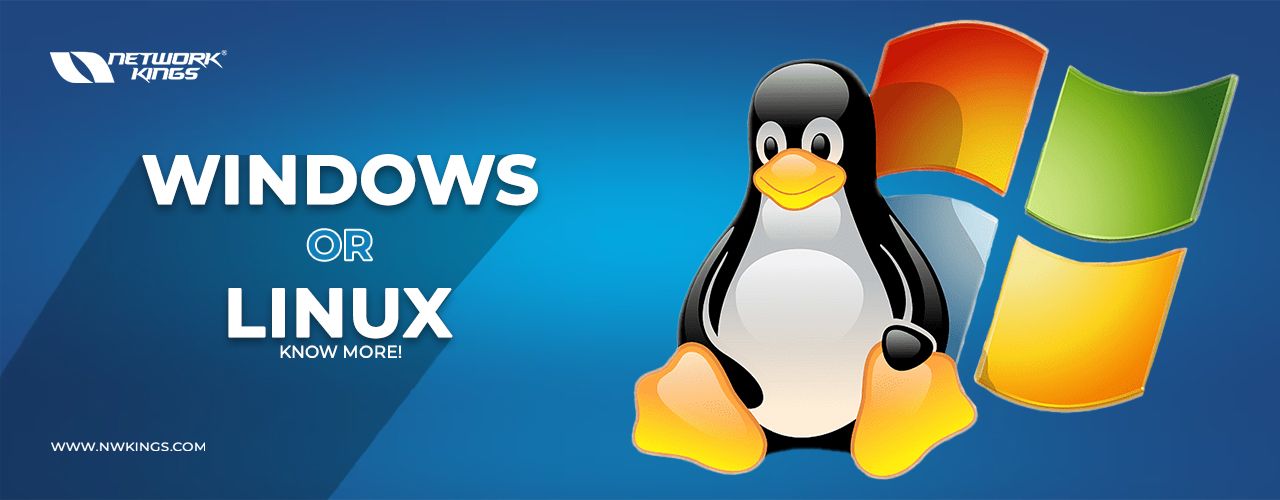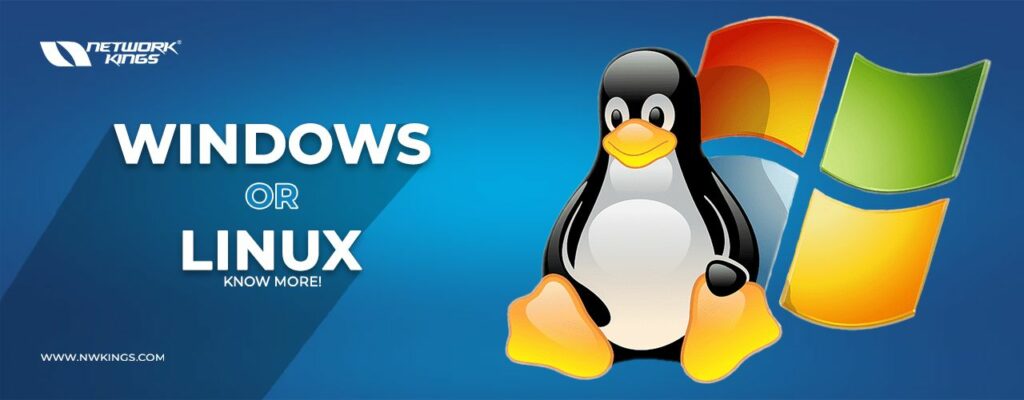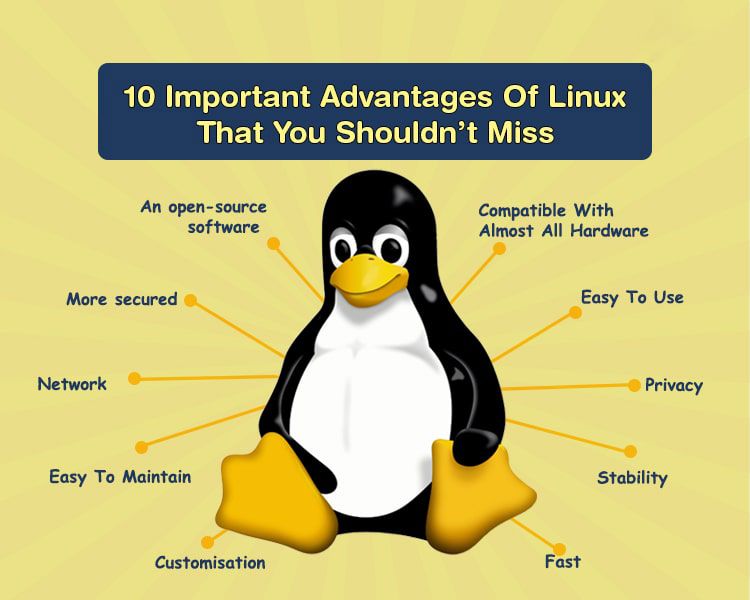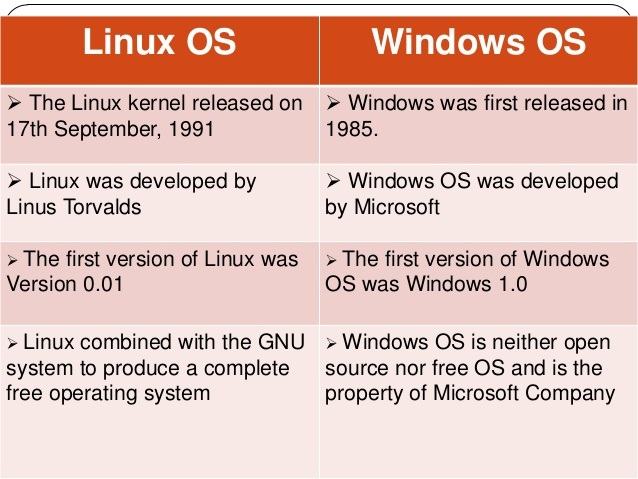
What is the Linux operating system?
Linux is a Unix-like, open source and community-developed operating system (OS) for computers, servers, mainframes, mobile devices and ingrained devices. It is backed on almost every major computer forum, including x86, ARM and SPARC, making it one of the most widely supported operating systems.
What is Linux? Explain its features.
The features of Linux are listed below.
- Open-source: One of the numerous significant parts of Linux is that it is open-source software. This means that everyone has access to the source code and may revise and transmit it. This feature has permitted Linux to extend and develop rapidly throughout the years, owing to the huge developer community that has donated to its development.
- Free: Another important feature of Linux is that it is free to employ. This makes it open to everyone, regardless of financial limitations. This qualification has helped Linux’s wide approval, especially in generating countries where the cost of proprietary software is extremely expensive.
- Customizable: Since Linux is a favourably customizable Operating System, users may change it to their conditions. This could contain everything from personalizing the desktop experience to installing and configuring various software packages. The flexibility to customize Linux has made it a prevalent choice for developers and system administrators who want a flexible operating system that can be adjusted to their respective demands.
- Security: Linux is well-known for its security features, making it a popular choice for enterprises and organizations looking for a safe operating system. Linux has a firewall and extensive security features, like encryption, access control, and secure boot.
- Stability: Linux is a stable operating system with a prestige for reliability. It has a strong architecture and is built to withstand high workloads and large-scale activities. As a result, it is a chosen option for servers and other mission-critical systems.
- Performance: Linux is performance-optimized and can run on a variety of hardware, from low-powered smartphones to high-end servers. It is a popular choice for embedded systems and other devices with limited resources due to its lightweight architecture and effective use of system resources.
- Multi-user support: Linux permits multiple users, making it excellent for usage in corporations and other shared situations. Each user has an account that may be customized with various permissions and access levels.
- Command-line interface: The command-line interface (CLI) in Linux permits users to carry out a wide range of operations quickly and efficiently. This functionality is especially beneficial to developers and power users who need to automate tasks and accomplish complicated procedures.
- Compatibility: Linux is positively compatible with a wide range of hardware and applications. This suggests that users may run Linux on nearly any device, and they can also operate tools like Wine and virtualization software to run applications developed for other operating systems.
- Multilingual support: Linux supports multiple languages, making them available to people all around the world. It also has built-in support for several character sets and input techniques, making it simple to text in multiple languages.
- Community support: Linux has a wide and active user and developer community that is always willing to administer to others. This community offers assistance through forums, email lists, and other online tools, making it simple for users to seek assistance when they need it.
- Compatibility with cloud computing: Linux is highly consistent with cloud computing platforms like Amazon Web Services, Google Cloud Platform, and Microsoft Azure. This compatibility makes it easy to deploy Linux-based applications and services on cloud platforms.
What is a Linux command?
A Linux command is a string of characters that is typed into a terminal to manage a program or utility. Linux commands are case-sensitive, so you must type them exactly as they appear in the documentation.
To conduct a command, type its name followed by any arguments or options on a single line. For example, to list the contents of the current directory, you would type the following command:
“ls”
To see a list of all the available commands, type the “help” command:
“help”
To get more information about a particular command, type the “man” command followed by the name of the command:
“Man ls”
This will open a manual page for the command, which contains detailed information about its usage and options.
You can also use the “tab” key to auto-complete the names of commands and options. For example, if you type “ls ” and then press “tab”, the terminal will suggest all the available options for the “ls” command.
To exit a command, press “Ctrl+C”.
Here are some of the most common Linux commands:
- “ls” – List the contents of a directory
- “cd” – Change the current directory
- “mkdir” – Create a new directory
- “rmdir” – Remove an empty directory
- “cp” – Copy a file
- “mv” – Move a file
- “rm” – Remove a file
- “cat” – Display the contents of a file
- “echo” – Print a message to the console
- “man” – Display the manual page for a command
- “help” – Display a list of all the available commands
What is Linux used for?
Linux is used for various purposes. Here is a list of some of the popular uses:
- Compatible with any hardware: Linux is compatible with any kind of Hardware. It may include Windows PCs and Laptops, Macs, Windows Tablets, Chromebooks, Non-Android Phones and Tablets, and Gaming consoles.
- Open Source: Linux is an open-source OS. With no restrictions on how you use the software, anyone can handle and revise the source code for their purposes. Being open-source permits Linux to satisfy the developer’s essentials completely, a luxury you could never enjoy with proprietary OS software.
- Secure: Some people may fear that since anyone can access Linux’s source code, the OS is prone to hackers. But that’s not the case since so many eyes are on the source code, one can identify vulnerabilities and deal with them promptly. The result is a more robust code that’s less sensitive to cyber-attacks. Linux also has clearly defined privileges to restrict access to those who don’t belong. Root-level access, the equivalent of administrator privileges in other operating systems, is hyper-specific to the developer. Every other user of the system is only given lower-level, limited access.
- Reliable: Linux is famously reliable compared to other operating systems, with most users experiencing fewer issues. Part of this reliability is because Linux strongly focuses on background process management. Other operating systems will use background processes continuously during a session. Linux will only use a process for as long as necessary, disabling it until it’s needed once again.
- Easy to install: Linux couldn’t be easier to install. While the process is fairly complicated, the means of distribution are quite convenient. A wide variety of distributors can give you entrance to Linux, including Fedora, Ubuntu, Arch Linux, and Linux Mint. The installation process relies on your distribution model, so heed the steps drafted by whichever model you select.
What is Linux distribution?
A complete Linux system package called a distribution. Many Linux distributions are available to meet just about any computing requirement you could have. Most distributions are customized for a typical user group, such as business users. Multimedia enthusiasts, software developers, or average home users. Each customized distribution contains software packages directed to support specialized functions, such as audio and video editing software for multimedia enthusiasts, or compilers and a combined development environment for software developers.
What is Linux programming?
Linux programming forms applications, interfaces, programs and software. Often, Linux code is operated on desktops, real-time programs and embedded systems. Many free tutorials are available online to assist programmers in learning about the Linux kernel so that they can lawfully use, replicate, and create Linux freely.
What is Linux administration?
Linux is a major power in computing technology. Linux powers most web servers, mobile phones, personal computers, supercomputers, and cloud servers. The role of a Linux systems administrator is to operate the operations of a computer system like sustaining, improving, making user accounts/reports, and taking backups using Linux tools and command-line interface tools. Most computing devices are powered by Linux because of its high steadiness, high safety, and open-source environment.
What is Linux and its features?
Linux is an open-source, Unix-like operating system kernel that serves as the basis for diverse Linux distributions (distros). Here are some key features that describe Linux:
- Open Source: Linux is terminated under the GNU General Public License, making its source code freely available. This openness fosters teamwork and permits users to consider, change, and disseminate the source code.
- Multiuser Capability: Linux supports multiple users working on the system simultaneously, each with their user account and environment. This feature is important for servers and systems with multiple users.
- Multitasking: Linux authorises multiple processes to run concurrently, delivering efficient multitasking abilities. This is crucial for managing various tasks simultaneously.
- Security: Linux has a strong security model, with built-in features such as file permissions, user authentication, and encryption. The system is less prone to malware and viruses compared to other operating systems.
- Stability and Reliability: Linux systems are known for their stability and dependability. Many Linux servers run for vast periods without rebooting, providing constant availability.
- Networking Capabilities: Linux was designed with networking in mind. It contains a wide range of networking protocols and helps different networking services, making it an ideal choice for servers and networked environments.
- Portability: Linux can run on numerous hardware architectures, from small ingrained systems to large servers. This portability makes it flexible to distinct devices and environments.
- Flexibility and Customization: Users can tailor the Linux system to their particular needs. There are numerous desktop environments, package managers, and software options, asking users to construct a personalized computing environment.
- Command-Line Interface (CLI): Linux delivers a powerful command-line interface, giving users comprehensive control over the system. This is especially useful for administrators and power users.
- Large Software Repository: Linux distributions come with extensive software repositories including a wide range of applications. Package managers facilitate the process of establishing, revamping, and handling software.
- Community Support: The Linux community is vast and active. Users can locate help through media, online communities, and comprehensive documentation. This cooperative environment encourages knowledge-sharing and problem-solving.
- Scalability: Linux is scalable and can efficiently run on devices with limited resources and high-performance servers. This scalability is due to its versatility in diverse computing environments.
These features collectively contribute to the vogue and across-the-board use of Linux in various settings, ranging from personal computers to servers, embedded systems, and beyond.
What is a Linux server?
A Linux server is a server running a variant of the Linux open-source operating system (OS). It is produced for the most demanding business applications, such as web services and databases.
Linux servers provide a strong foundation for complex, enterprise-level data centers and workload environments, ranging from bare metal to virtual machines, and containers, including private or public clouds. They can also guide your digital transformation journey and cloud app development, with the capability to increase productivity, deliver services faster, and incorporate software innovations like cloud, containers, and configuration automation.
What is a Linux shell?
The shell can be defined as a command interpreter within an operating system like Linux/GNU or Unix. It is a program that directs other programs. The shell enables every computer user as an interface to the Unix/GNU Linux system. Hence, the user can perform other tools/utilities or commands with a few input data.
The shell transmits the result to the user over the screen when it has finished running a program which is the common output device. That’s why it is known as “command interpreter”.
The shell is not just a command interpreter. Also, the shell is a programming language with full constructs of a programming language, such as functions, variables, loops, conditional execution, and many others.
For this reason, the GNU/Unix Linux Shell is more powerful than the Windows shell.
Where can you enrol for the best Linux course?
As we know, Linux certifications are necessary to evolve a Linux administrator. To achieve a Linux course, you need a renowned edTech platform. The best edTech platform is Network Kings. The best Linux course is Network Kings. Here are the advantages of comprehending Linux with Network Kings.
- Numerous Languages: Select Hindi and English.
- 24X7 service: To answer your questions.
- Industry relevant Syllabus: Most outstanding resources to understand from.
- Get Certified: Get a completion certificate.
- Red Hat labs: You get access to the exclusive Red Hat virtual labs if you enrol in the Red Hat Linux course at Network Kings.
- Training by top-notch Linux professionals: Get trained directly by Linux professionals with more than 12 years of experience in the industry.
What is the eligibility for a Linux course?
To pursue a Linux certification course, one should be eligible for the Linux Course:
- Graduation is a necessity.
- Knowledge in the IT industry.
- Networking basics are a must.
- Familiarity with TCP/IP.
What are the exam details of the Linux Course?
Here are the exam details of the Linux Course:
To clear RHCSA certifications, the student should clear the EX200 exam. Here are the details of the RHCSA certification exam.
Exam Name: Red Hat Certified System Administrator (RHCSA) exam
Exam Code: EX200
Exam Cost: USD 400
Exam Format: Lab-based practical questions
Total Questions: 20-25 questions
Passing Score: 210/300
Exam Duration: 150 minutes
Languages: English, Japanese, Korean, and Simplified Chinese
Testing Center: Pearson VUE
Here are the exam details for RHCE:
RHCE includes three exams: EX294, EX298, and EX300.
EX294: Exam Name: Red Hat Certified Engineer (RHCE)
Exam Code: EX294
Exam Cost: USD 400
Exam Format: Performance-based questions
Total Questions: 15-20 questions
Passing Score: 210/300
Exam Duration: 4 hours
Languages: English, Japanese, Korean, and Simplified Chinese
Testing Center: Pearson VUE
EX298: Exam Nam: Red Hat Certified Engineer (RHCE)
Exam Code: EX298
Exam Cost: $400 + applicable taxes
Exam Format: Performance-based questions
Total Questions: 15-20 questions
Passing Score: 210/300
Exam Duration: 4 hours
Languages: English, Japanese, Korean, and Simplified Chinese
Testing Center: Pearson VUE
EX300: Exam Name: Red Hat Certified Engineer (RHCE)
Exam Code: EX300
Exam Cost: $400 + applicable taxes
Exam Format: Performance-based questions
Total Questions: 10 questions
Passing Score: 210/300
Exam Duration: 3.5 hours
Languages: English, Japanese, Korean, and Simplified Chinese
Testing Center: Pearson VUE
What is the syllabus of the Linux course?
Listed below is the syllabus of the Linux Course:
- Learn Linux Operating System.
- Command-line skills
- System Administration
- Scripting tools
- Networking
- Cloud computing
- Virtualization
- Database management
- Security
- Collaboration and Communication
Note: if you’re interested to know an in-depth blueprint of the Linux course syllabus, you can check it out here.
What are the job opportunities with the Linux course?
Job opportunities with the Linux course are:
- Linux System Administrator
- Linux Network Administrator
- DevOps Engineer
- Cloud Engineer
- Site Reliability Engineer
- IT Support Engineer
- Security Analyst
- Software Developer
- Database Administrator
- IT Manager
- System Engineer
- Virtualization Engineer
- Storage Administrator
- Automation Engineer
- Network Engineer
- Infrastructure Engineer
- Technical Support Engineer
- IT Consultant
- Quality Assurance Engineer
- Penetration Tester
What are the salary expectations for the Linux Course?
Salary varies from country to country and state to state. The salary expectation for a Linux Course for a Linux Administrator is ₹5,00,000 per year. Here are salary expectations for Linux courses in different countries.
- United States – USD 70,000 – USD 150,000 per year
- Canada – CAD 60,000 – CAD 120,000 per year
- United Kingdom – £35,000 – £70,000 per year
- Germany – €45,000 – €90,000 per year
- France – €35,000 – €70,000 per year
- Australia – AUD 75,000 – AUD 120,000 per year
- New Zealand – NZD 60,000 – NZD 100,000 per year
- United Arab Emirates – AED 90,000 – AED 200,000 per year
- India – INR 500,000 – INR 1,500,000 per year
- Singapore – SGD 60,000 – SGD 120,000 per year
- Hong Kong – HKD 350,000 – HKD 700,000 per year
- Japan – JPY 5,000,000 – JPY 10,000,000 per year
- South Korea – KRW 40,000,000 – KRW 80,000,000 per year
- Brazil – BRL 60,000 – BRL 120,000 per year
- South Africa – ZAR 200,000 – ZAR 600,000 per year
Conclusion
Linux has come up with great opportunities and will brighten your future. Linux has various job opportunities with high salaries. Learning Linux will help you gain apt skills to enhance your career growth. One can enroll with Network Kings to step into the Linux world affordably and can get various benefits, like learning from industry experts, and many more!






